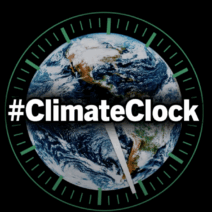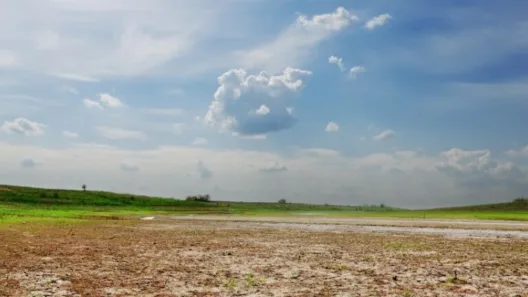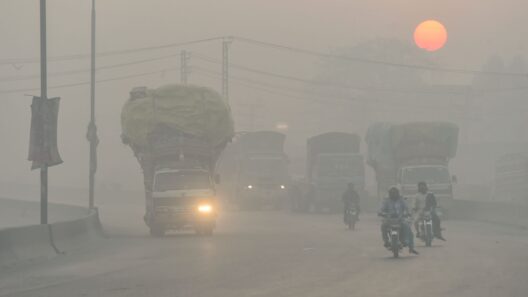Global warming has become a crucial topic of discussion in recent years, yet many individuals remain unaware of its profound and unseen impacts on our planet. As temperatures rise, ecosystems face alterations that pose unprecedented challenges. One must ponder—what will it take for us to prioritize action against this gradual yet destructive phenomenon? With significant milestones, such as the potential crossing of the 1.5-degree threshold within the next five years, the implications of inaction become painfully evident. This article explores the myriad facets of global warming, shedding light on its intricate ramifications.
The phenomenon known as climate change primarily arises from the accumulation of greenhouse gases in the atmosphere, predominantly carbon dioxide, methane, and nitrous oxide. This buildup traps heat, leading to a rise in Earth’s surface temperature. While the concept may seem abstract, the implications directly influence biodiversity, human health, and global economies. Are we prepared to confront these complexities?
One of the most evident effects of rising temperatures is the alteration of weather patterns. Meteorological extremes—such as more stringent heatwaves, intense storms, and prolonged droughts—have become increasingly common. For instance, regions that traditionally experienced temperate climates find themselves unprepared for torrential downpours or sudden droughts. Agriculture, the very foundation of human sustenance, stands at risk. Farmers face an uphill battle to adapt their practices, and crop yields may suffer dramatically as conditions continue to fluctuate. So, how can we ensure food security in an unpredictable climate?
The ramifications extend beyond farming; ecosystems are also directly affected. Many species struggle to adapt to their evolving habitats, leading to biodiversity loss. Coral reefs, renowned for their scintillating colors and marine biodiversity, are facing severe bleaching due to rising ocean temperatures. Marine ecosystems are destabilizing, with intricate food webs unraveling. The loss of key species can have a cascading effect, jeopardizing marine life and the livelihoods of communities dependent on fishing. In the same vein, terrestrial animals grapple with shifting habitats and migration patterns, forcing some to adapt, while others succumb to extinction.
Another harrowing consequence of global warming is its impact on human health. As temperatures soar, heat-related ailments become more prevalent, particularly among vulnerable populations, such as the elderly and outdoor workers. Respiratory illnesses have surged as air quality diminishes alongside rising pollution levels. Moreover, the proliferation of vector-borne diseases, such as malaria and dengue fever, is projected to escalate, as warmer climates enable disease-carrying organisms to thrive in previously inhospitable zones. The question arises: how can we fortify our healthcare systems against these mounting challenges?
The economic toll wrought by climate change is staggering. The frequency of extreme weather events—often attributed to global warming—results in significant financial burdens. Infrastructure suffers damage during hurricanes, floods, and wildfires, necessitating costly repairs and renovations. Insurance premiums rise, impacting homeowners and businesses alike. Conversely, regions reliant on tourism, particularly those with natural attractions, face dwindling visitors as climate-related changes degrade their environments. The interdependence of global economies emphasizes the necessity for collective action; addressing climate change cannot be relegated to isolated efforts. Can we mobilize the will to enact the transformative policies necessary for mitigation?
While the consequences are dire, humanity is presented with an opportunity for change. Renewable energy technologies—solar, wind, and hydroelectric power—offer pathways to reduce greenhouse gas emissions. Transitioning from fossil fuels to cleaner alternatives is pivotal. Moreover, embracing energy efficiency in buildings and industries can significantly mitigate waste and emissions. The challenge lies in the inertia toward change; many regions cling to traditional practices due to economic interests or lack of resources. How do we instigate widespread adoption of sustainable technologies in both developed and developing nations?
Additionally, reforestation and afforestation initiatives hold substantial promise for carbon sequestration. By restoring and expanding forested areas, we can absorb atmospheric carbon dioxide and restore natural habitats. Community-led conservation projects empower local populations and build resilience against climate impacts. Education and awareness campaigns can inspire collective action, fostering a sense of responsibility toward environmental stewardship.
It is imperative to recognize that not addressing global warming carries far-reaching deep-seated consequences. Young generations will inherit a world struggling with the dilemmas we choose to ignore today. Climate inequity poses a further layer, as developing countries often bear the brunt of climate impacts without contributing significantly to the problem. How can we ensure fair and equitable solutions that prioritize the needs of those who are most affected?
In conclusion, global warming constitutes a grave threat that demands urgent attention. The intricate web of consequences—affecting weather patterns, biodiversity, human health, and economic stability—cannot be underestimated. While an array of challenges lay ahead, pathways to solutions are available. The question remains: will we confront this critical challenge with resolute action, or will we allow our planet’s fever to reach catastrophic levels? The choice lies in our hands, and the time to act is now.







